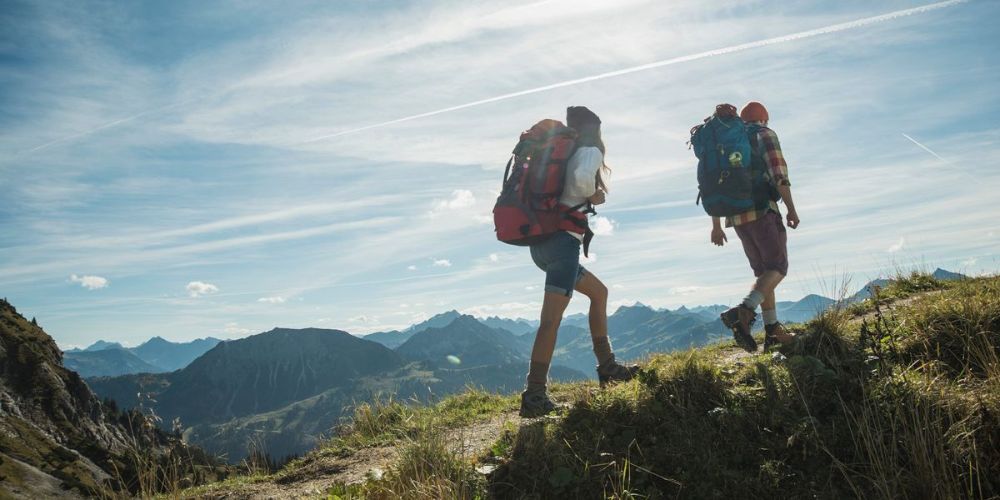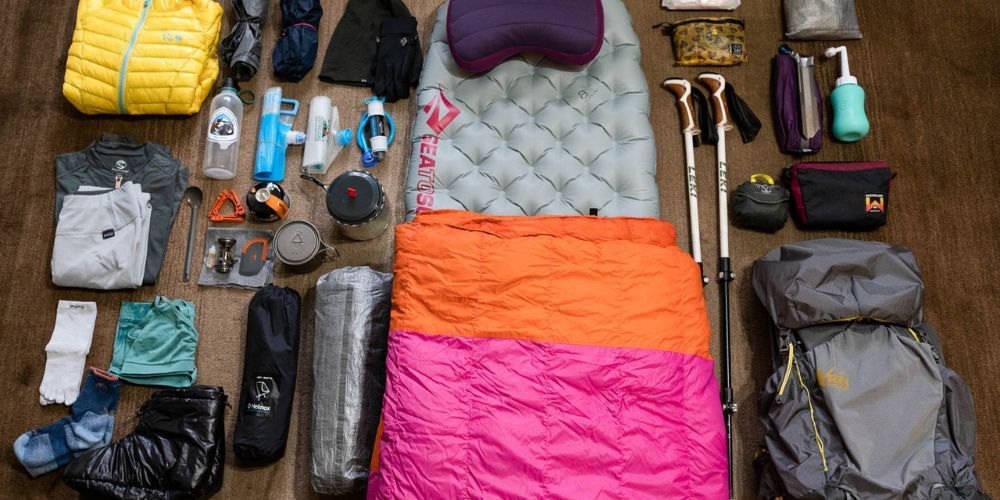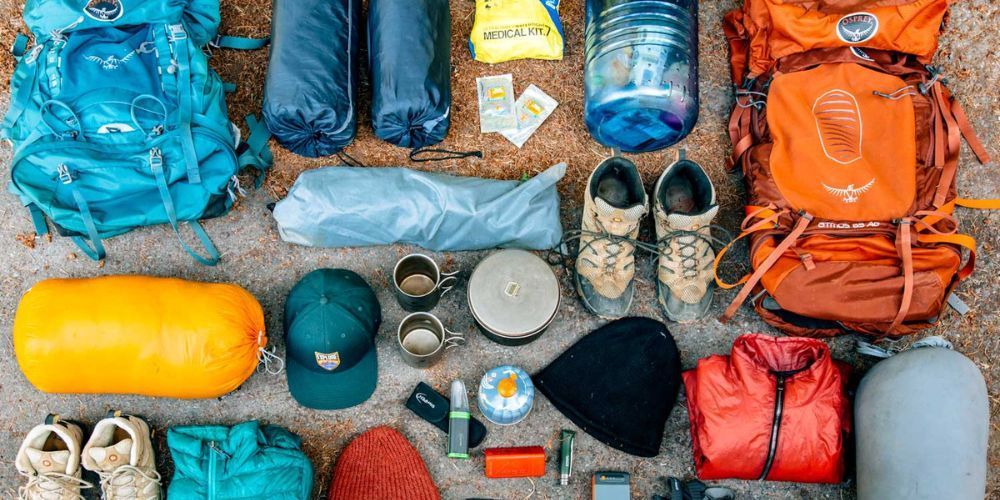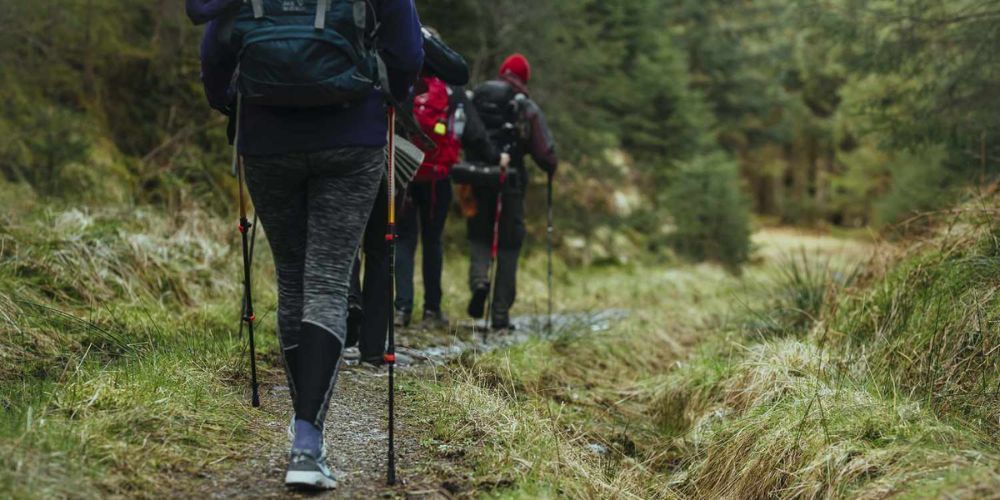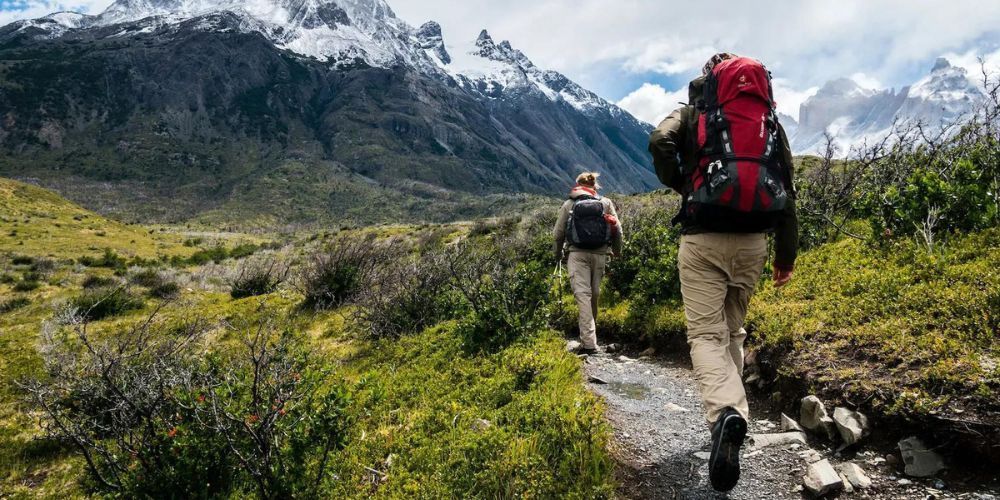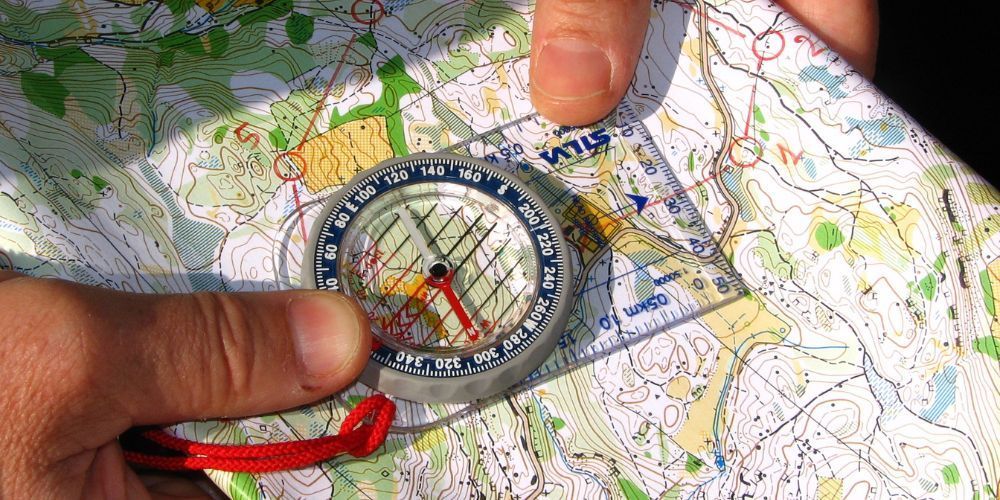The Ultimate Backpacking First Aid Kit: Essential Hiking Safety Gear
In the heart of nature’s vast wilderness, every step feels liberating yet fraught with unspoken risks. This blend of thrill and unpredictability makes preparing for emergencies an absolute necessity for any avid hiker. Venturing into the backcountry without a comprehensive first aid kit isn't just unadvisable—it's nearly asking for trouble.
There’s nothing like trekking through endless canyons or serene forest paths with peace of mind knowing you’ve got essentials covered. Packing an efficient first aid kit ensures you can handle everything from minor scrapes to potential emergencies. From fundamental wound care items like sterile gauze pads and adhesive bandages to critical medications tailored for outdoor conditions, each component has been carefully selected through countless hours of research and real-life experiences shared by seasoned adventurers. Let’s explore what you absolutely need in your backpacking first aid kit to safeguard your journeys into nature’s unknowns.
A basic backpacking first aid kit should include essentials such as adhesive bandages, gauze pads, adhesive tape, antiseptic wipes, pain relievers like ibuprofen, blister treatment, tweezers, and an emergency whistle. It's important to tailor your kit to the specific needs of your trip and environment while considering potential injuries and health concerns. Always consult with healthcare professionals for personalized advice.
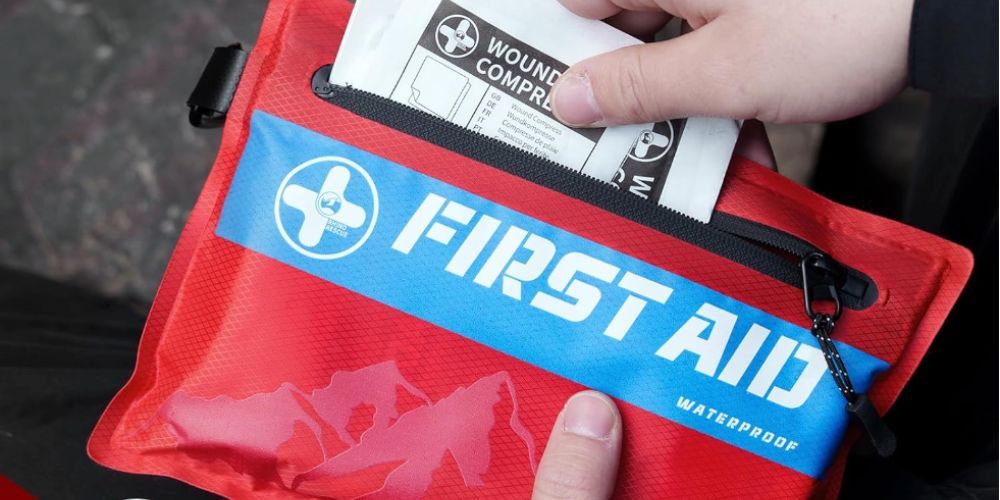
Essential Items for a Backpacking First Aid Kit
When piecing together your backpacking first aid kit, it's essential to pack enough supplies without turning your pack into an anvil. Let's examine the critical components you should consider including:
Wound Care Supplies
Proper wound care is crucial for preventing infections and promoting faster healing. This section of the kit should include sterile gauze pads in various sizes for treating cuts and wounds, held in place by adhesive bandages of multiple sizes. Medical tape is also indispensable for securing dressings, ensuring they remain in place during movement.
Infection Control
Infection control is paramount, especially when immediate medical assistance is not at hand. Include antiseptic wipes to cleanse wounds effectively, and triple antibiotic ointment to prevent infections from taking hold in any open wounds.
Pain and Illness Management
Supplies for managing pain and illness are indispensable, particularly for extended trips. Adding ibuprofen or acetaminophen can offer much-needed relief for headaches or minor injuries. Similarly, having antihistamine tablets available will help mitigate allergic reactions and insect bites.
It's like thinking of these small but mighty medical supplies as a traveler’s personal medicine cabinet. They may not take up much space, but they can bring immense relief when needed most.
Tools
In addition to the typical bandages and antiseptics, it's important to account for general tools that may come in handy. Your kit should contain a reliable pair of tweezers for removing splinters and ticks, along with small scissors for cutting tape and gauze as required. Don't forget to add some safety pins , which serve myriad purposes such as securing bandages or creating slings.
Looking at this collection of tools, they mirror the forethought we put into preparing our homes for unforeseen situations—emergency repair kits under the sink or toolboxes in the garage. It's all about readiness and being equipped to handle whatever comes our way.
Emergency Supplies
Preparing for worst-case scenarios is also a critical part of assembling your first aid kit. An emergency blanket is vital for treating shock and hypothermia, while a whistle serves as a simple yet effective signaling device for assistance. A CPR face shield should also be included for safe resuscitation attempts, providing protection from potentially harmful bodily fluids in emergency situations.
As we can see, each item plays a unique role in ensuring hikers are adequately prepared for potential emergencies while exploring the great outdoors. But there's still more to cover. Let's move on to additional considerations when crafting your ultimate backpacking first aid kit.
Necessary Medications for Hikers
As a hiker, being prepared for any health situation that may arise on the trail is essential. When you're far away from modern amenities, having the right medications can make a big difference in your well-being. Let's take a look at the different types of medications that you should consider including in your backpacking first aid kit :
Prescribed Medications
Expanding upon the concept of personal preparedness, hikers should prioritize packing an adequate supply of any prescribed medication. Ideally, these should be carried in waterproof containers to protect them from moisture and other environmental factors. Ensuring access to vital prescribed medications is crucial for managing chronic conditions and ensuring well-being during a hike.
Over-the-Counter Options
In addition to prescribed medications, over-the-counter options can be valuable additions to your hiking first aid kit. Consider carrying anti-diarrheal tablets , such as Loperamide , to manage any stomach issues that may arise on the trail due to consuming unfamiliar foods or water. Electrolyte tablets are also essential for preventing dehydration, especially during exertion or in hot climates. Furthermore, including antacid tablets can help counteract any digestive discomfort from consuming unfamiliar foods or water sources.
It's important to note that certain environments or dietary changes can lead to unforeseen health issues, making these over-the-counter options vital for maintaining health and comfort during extended outdoor excursions. They not only provide immediate relief but also contribute to an overall positive hiking experience by reducing the risk of common health complications encountered on the trail.
First Aid Specific Medications
For hikers with specific medical conditions such as severe allergies requiring epinephrine injections, an EpiPen should be a part of the essential packing list. In instances of severe allergic reactions, having quick access to an EpiPen can be life-saving.
Incorporating these first aid specific medications demonstrates a proactive approach to addressing potential emergencies on hiking expeditions. This preparedness fosters confidence and security in handling unexpected health crises while venturing into remote areas where professional medical assistance may not be readily available.
Being equipped with a comprehensive assortment of prescribed medications and over-the-counter remedies tailors your hiking first aid kit to address individual health needs as well as common trail-related health challenges.
Packing Tips for Your Emergency Kit
Packing your backpacking first aid kit efficiently is crucial. You want to have everything you need while also keeping the weight down because a heavy pack can slow you down and tire you out. Let's go through some essential tips to keep your emergency kit organized and manageable:
Step I - Organize and Label
Organization is key when it comes to first aid kits, especially in an emergency. Use clear plastic bags to separate and organize different categories of items like wound care, medications, and tools. This makes it easier to find what you need quickly. Additionally, consider labeling each bag clearly with a marker for quick identification. This simple step can save precious time during an emergency.
Step II - Waterproofing
Backpacking often means exposure to varying weather conditions. Pack all items in waterproof or zip-lock bags to protect them from moisture damage. Moisture can ruin supplies such as bandages, medications, and tools, rendering them ineffective when they are needed most. A watertight seal can make all the difference in ensuring your kit remains reliable during unexpected weather changes.
Step III - Accessibility
During an emergency, quick access to essential items can be a matter of life and death. Place items like adhesive bandages , antiseptic wipes , and instant cold packs at the top of the kit for easy access. This way, you won't have to rummage through the entire kit when time is of the essence.
Step IV - Weight Management
While it's important to have a well-stocked first-aid kit, it's equally vital to consider weight limitations. An overly heavy kit can be burdensome during long hikes and may deter you from carrying it at all times. Opt for lightweight versions of supplies where possible, such as travel-sized antiseptic and lightweight bandages. Remember to balance the need for variety with weight limitations to avoid a cumbersome kit that hinders your mobility.
By organizing, waterproofing, ensuring accessibility, and managing weight effectively, you'll not only have a well-prepared backpacking first aid kit but also peace of mind knowing that you're ready for any situation that may arise on the trail.
Treating Common Hiking Injuries
Hiking is a fantastic workout for your body and mind, but it's not without its risks. Many hikers experience an array of injuries while on the trails, ranging from pesky blisters to cuts, scrapes, sprains, and strains. Knowing how to handle these issues can make all the difference in keeping a hiking trip enjoyable and safe.
Blisters
Blisters are undoubtedly one of the most widespread hiking injuries, accounting for nearly 40% of all hiking-related injuries. Prevention is imperative when it comes to blisters. To preempt these painful annoyances, it's crucial to utilize moleskin or blister bandages on high-friction areas before blisters have a chance to form. If a blister does develop, clean the area with an antiseptic wipe , apply antibiotic ointment , and cover it with a protective bandage to reduce discomfort and expedite healing.
Cuts and Scrapes
Cuts and scrapes are another common mishap among hikers, making up approximately 20% of hiking injuries. Proper treatment begins with thorough cleaning using antiseptic wipes to remove any dirt or debris that may cause infection. Once the area is cleaned, apply sterile gauze pads and secure them with medical tape to protect the wound from further contamination.
Sprains and Strains
Sprains and strains make up about 25% of hiking-related injuries and can put a damper on an otherwise enjoyable hike. Immobilization is key in addressing these injuries. Use safety pins to fashion a sling or an elastic bandage to stabilize the affected area. Additionally, administering ibuprofen can provide effective pain relief and help manage swelling associated with sprains and strains.
By understanding how to effectively treat these common hiking injuries, you'll be better equipped to handle unexpected challenges on the trail, ensuring a safer and more enjoyable outdoor experience for yourself and others.
Armed with the knowledge of treating common hiking injuries, the next vital step towards a safe and enjoyable hiking experience lies in knowing how to prevent illness on the trail.
Preventing Illness on the Trail
When venturing into the great outdoors, staying healthy is just as important as avoiding physical injuries. It's not always thrilling, but it's undeniably crucial. Illness on the trail can transform a delightful adventure into a grim memory, so let's ensure we take the necessary steps to prevent it.
Clean Water is Essential
First things first, having clean water is a non-negotiable part of staying healthy on the trail. While there may be water sources along the way, their safety isn't guaranteed. That's why carrying water purification tablets or a portable water filter is crucial. These small tools add barely any weight to your backpack but can save you from potentially severe illnesses down the line. Waterborne pathogens are nothing to take lightly, so investing in proper purification methods will ensure you have safe drinking water throughout your journey.
The Importance of Hand Hygiene
Hand hygiene is often overlooked when hiking, especially in remote areas. However, it's supremely important, particularly before eating or handling food. Bringing hand sanitizer and making its frequent use a habit is an easy way to reduce the risk of transferring harmful germs into your body. It's as simple as carrying a small bottle with you and allowing it to become a customary part of your routine.
Safeguard Your Food
Just like at home, food safety is just as vital while backpacking. Packing non-perishable food items and storing them in airtight containers can protect your meals from contamination and spoilage. Additionally, by selecting foods that don't need refrigeration, you're simultaneously lightening your load while ensuring your sustenance doesn't pose any health risks.
Defend Against Insects
Insect protection may not seem directly related to preventing illness, but by applying insect repellent on exposed skin and clothes, you guard against mosquito and tick bites. These pests are known carriers of numerous diseases such as Lyme disease and West Nile virus. By integrating this practice into your preparation routine, you're creating a barrier between yourself and illnesses spread by insects.
By being proactive about these key factors—clean water, hand hygiene, food safety, and insect protection—you can significantly reduce the risk of falling ill during your outdoor adventures. Stay smart, stay healthy!
As we've fortified our understanding of essential hiking safety gear, let's now turn our attention towards preserving and maintaining these critical supplies for prolonged use.
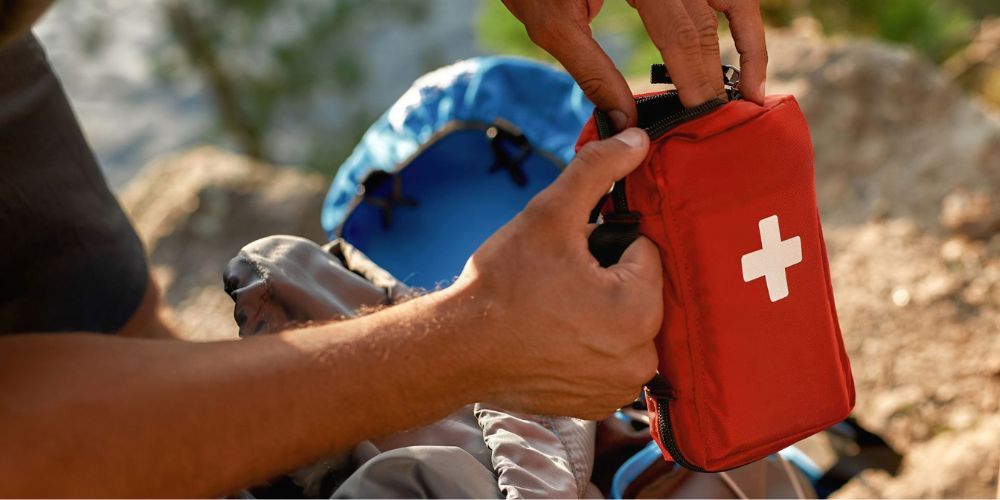
Kit Maintenance for Long-Term Use
A well-maintained first aid kit can be a literal lifesaver when you're out on the trail. Whether it's a scraped knee or a more serious injury, having a well-stocked and up-to-date first aid kit ensures that you're prepared for any medical situation that may arise. Here are some essential steps for keeping your first aid kit in top condition for long-term use.
Regular Inspection
Before each hike, it's crucial to thoroughly check your first aid kit to ensure that all items are present and undamaged. This regular inspection should include replacing any expired medications and replenishing used supplies such as bandages, antiseptic wipes, or any other consumables that may have been utilized on previous hikes. By doing so, you can rest assured that your first aid kit is complete and ready for any emergency that comes your way.
It's important to note that certain supplies may degrade over time, and their efficacy can diminish. Therefore, it's crucial to replace any outdated or damaged items to guarantee the effectiveness of your kit in case of an emergency.
Proper Storage
The longevity and effectiveness of your first aid kit heavily depend on proper storage. Storing the kit in a cool, dry place when not in use helps maintain the integrity of its contents. Exposure to extreme temperatures or moisture can degrade medications and ointments and reduce the shelf life of various supplies. Therefore, finding an appropriate storage location is key to ensuring that your first aid kit is always ready for use.
Updating Knowledge
Aside from maintaining the physical components of your first aid kit, it's equally vital to update your own knowledge and skills in administering first aid. Periodically reviewing first aid procedures and techniques can keep your skills sharp and ready for action when needed most. Additionally, consider taking a wilderness first aid course to remain prepared for any situation you might encounter while backpacking. Along with refreshing your skills, these courses often provide valuable insights into handling medical emergencies specific to outdoor environments.
Feedback Loop
After completing each hike, take some time to review which items were utilized from your first aid kit and note what injuries or issues were most common among your hiking group. This feedback loop provides valuable information that can help tailor your first aid kit based on the specific needs identified during your outdoor adventures. By reflecting on the usage patterns, you can adjust your kit accordingly to better prepare for future hikes. This proactive approach ensures that you're always equipped to handle the most common injuries or medical issues encountered during backpacking trips.
Maintaining your first aid kit isn't just about checking off a list – it's about ensuring that you're ready for any situation that may arise during your hiking expeditions.
Properly maintaining your first aid kit is not only about being prepared but also about being proactive in addressing potential medical emergencies. It's an essential aspect of responsible and safe backpacking. With these guidelines, you can ensure that both you and your fellow hikers are well-prepared for any unforeseen circumstances.
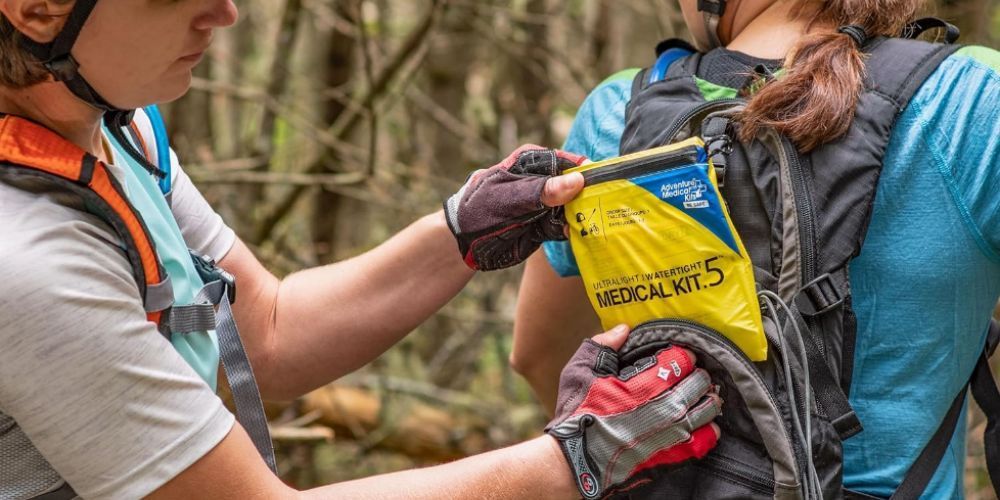
Nature's Playbook
As an Amazon Associate I earn from qualifying purchases.



